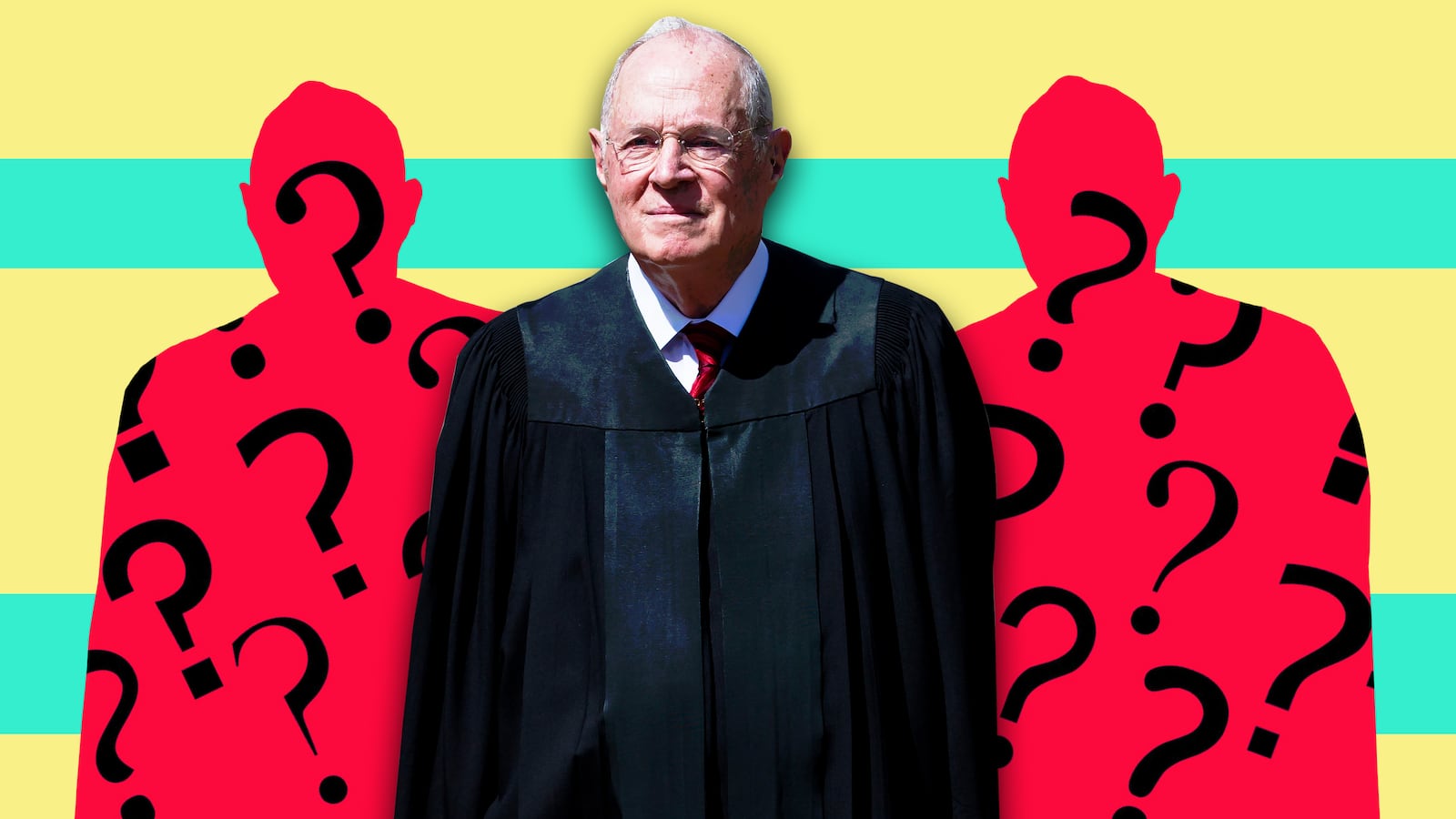With the retirement announcement of Justice Anthony Kennedy, the battle royale begins.
Whoever succeeds Justice Kennedy will determine the answers to numerous critical questions: the rule of law under Trump, immigration rights, voting rights, LGBT rights, women’s rights, affirmative action, money in politics, unions, religious freedom, federalism, environmental law, even the regulatory state itself are all on the agenda.
Democrats and their allies have already launched their strategy: Turn the Republicans’ rhetoric against them. “The American people should have a voice in the selection of their next Supreme Court justice,” one Democratic rep tweeted. “Therefore, this vacancy should not be filled until we have a new Congress.”
That, of course, is similar to what Republicans said two years ago, after the death of Justice Antonin Scalia.
The trouble is, unlike the Republicans in 2016, Democrats have no arrows in their quiver. They can’t filibuster, can’t “shut down” the government, can’t “resist” in any formal, legislative way.
Moral suasion won’t work either. Surely, when it comes to hypocritically taking and abandoning political positions, Senate Majority Leader Mitch McConnell is without peer. After all, he led the stonewalling of Judge Merrick Garland in the first place, and created a fake-venerable senatorial tradition to do so ex nihilo.
McConnell, unbelievably, even said on Wednesday, “It’s imperative that the president’s nominee be treated fairly.” After what he did to Judge Garland, that is the dictionary definition of chutzpah.
But what will be the Republican strategy?
The truth is, they don’t need one. They have the votes. And while Democrats will raise a hue and cry during the confirmation process, eventually that process will end (remember, there’s no filibuster) and the party-line vote will confirm whoever Trump puts up.
As for who Trump might pick, let’s remember that the “definite, final shortlist” of candidates in 2017 ended up being five people, none of whom were Neil Gorsuch. Part of this was likely misdirection on the White House’s part, but part of it was probably due to Trump’s decision-making “process,” which has a lot to do with gut impulses, first impressions, and superficial qualities like good looks and height (both of which Justice Gorsuch possesses).
Anyone who says they know who the frontrunners are doesn’t know how Donald Trump makes decisions.
Still, the most likely candidates are those who appeared on Trump’s 2017 list of 25 possible replacements for Justice Scalia. Today, Trump said, “It will be somebody from that list. They will come from that list of 25 people.”
All of them have already been vetted by the Federalist Society, chiefly Leonard Leo, the arch-conservative masterminding Trump’s judicial strategy, which means that all of them are to the right of the judicial mainstream. Moderate Republicans need not apply.
Within that list are two categories of potential nominees.
First are safe choices: qualified, highly conservative jurists in the mold of Justice Gorsuch. These are people who exist in the “sweet spot”: extreme conservatives who will delight Trump’s base and who are also unimpeachably qualified judges Democrats will have to oppose on the merits (which almost never works).
This category includes frontrunners who currently serve on federal appeals courts: Judges Thomas Hardiman, from the 3rd Circuit; Steven Colloton, from the 8th (one of the few candidates to actually have a pro-life record on the bench); Diane Sykes (7th); Raymond Gruender (8th); Brett Cavanaugh, on the D.C. Circuit, Amy Coney Barrett (7th), and Joan Larsen (6th). These are all top-tier jurists who are also to the right of the late Justice Scalia, not to mention Justice Kennedy.
Other judges in this category include Kevin Newsom, Margaret Ryan, Timothy Tymkovich, Patrick Wyrick, Raymond Kethledge, Edward Mansfield, Amul Thapar, Allison Eid, David Stras, Keith Blackwell, Charles Canady, Britt Grant, and Thomas Lee. These would all be solid picks, but not as high-profile as the first list.
Second, there are the riskier choices. On that list I’d place Judge William Pryor from the 11th Circuit, Judge Don Willett (nicknamed the “Twitter Judge” for his avid use of the platform), Judge Federico Moreno (“risky” only because his ethnic background might not please some of those in the base), and Judge Robert Young (risky because he is 67 years old).
Pryor probably has the highest profile of all the candidates being looked at and is most beloved of the Heritage Foundation and Federalist Society, the primary conduits—via White House counsel Don McGahn—to Trump. Pryor has called Roe v. Wade “the worst abomination in the history of constitutional law”—worse, apparently, than Dred Scott (upholding slavery), Plessy v. Ferguson (segregation), and Korematsu (Japanese internment camps).
In an ordinary world, Pryor might be considered too toxic to consider. But since Republicans hold all the cards, why not go for broke?
Finally, there are some non-judges who may appeal to Trump. These include former Solicitor General Paul Clement and Utah Sen. Mike Lee. Lee, who would almost surely be replaced by another Republican, has already been asked if he’d be interested in the job, and has already said yes.
For his part, Clement has argued a number of winning Supreme Court cases, including the Hobby Lobby religious freedom case and Epic Systems, which won at the Supreme Court earlier this month and which made it harder for workers to join class-action lawsuits. Those wins have made him a hero to conservatives.
Finally, let’s not omit one crazy idea.
Could Fox News commentator Jeanine Pirro, a former judge and an ardent Trump supporter, get a serious look? Maybe. Donald Jr. has called the prospect of her nomination “pretty awesome.” Pirro would be, by far, the least-qualified Supreme Court justice in history, but she is loyal to Trump (an essential attribute) and, hey, anything goes.
As we’ve already seen.





